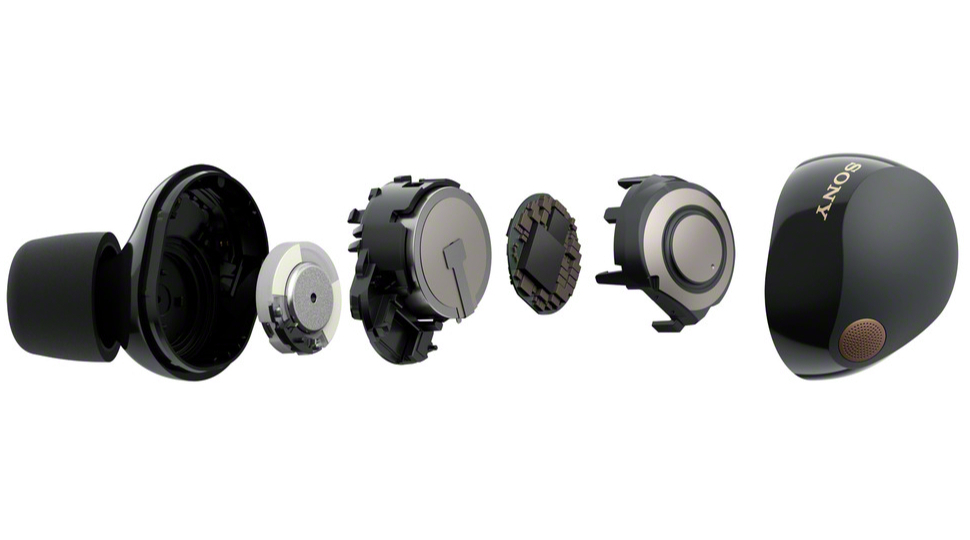I spoke to Sony's audio experts about how they tune the WF-1000XM5 earbuds' stunning sound
XM5 does it again – but how does it do it?

How does Sony do it?
Ever since the Japanese brand entered the true wireless earbuds market, starting with the WF-1000X earbuds launched back in 2017, it has been unstoppable. Sony has delivered some of the best audio experiences in that category in recent years and picked up a fair few Awards along the way, too.
The first WF-1000X, the successor WF-1000XM3, the long-standing WF-1000XM4 favourite and now the new WF-1000XM5 flagship – all earbuds have received rave five-star reviews from What Hi-Fi?, with sound quality hailed as the standard to beat, every time.
We said of the original WF-1000X: "At last, a pair of five-star, truly wireless in-ears we can really get behind," praised the current champs XM4 for their "immense musicality and expressive dynamics", and called the new XM5 pair Sony's "most accomplished and analytical wireless earbuds yet".
That's quite the track record, even for a company renowned for its decades-long audio heritage. But what's the secret to Sony's wireless earbuds audio success? How does the acoustic team tune the sound and raise their own standards?
I spoke to two of Sony's audio experts at the launch of the latest flagship WF-1000XM5 earbuds, and they gave an insight into how they developed the XM5's performance.
Sound tuning: a voices-first approach

The two Sony experts I spoke to were Kenichiro Hombo, product planner of the XM5 and responsible for the product concept (he also worked on the previous XM4 model), and Masoyoshi Hasegawa, Sony's headphone acoustic engineer since 2016 who was responsible for the active noise-cancellation (ANC) in the XM5 earbuds. It's worth noting that most of the answers were given through a translator.
The latest hi-fi, home cinema and tech news, reviews, buying advice and deals, direct to your inbox.
"At Sony, we tend to focus the tuning on the voice sound, first of all," says Kenichiro Hombo.
Right off the bat, the initial approach to tuning says so much about how Sony's earbuds sound. Rendering voices in a natural, authentic way is one of the hardest aspects that any audio product – whether stereo speakers or tiny earbuds – is tasked with reproducing. And it doesn't just cover the midrange frequencies; voices have elements of both high and low frequencies mixed in – every part of the frequency range is considered when tuning with voices first. Get the voices right, and the rest will usually follow.
But Sony doesn't just stop there. On top of the voice-first approach, I'm told that the team further tunes the audio by listening to "different kinds of sound" including "ambient sound" and a variety of genres and recording styles. "So we take the old style music and also the latest music – and this includes all the different kinds of sounds in order to tune."
With the XM5, Sony also paid particular focus on "accommodating all sorts of musical instruments" to develop the XM5 earbuds' sound. It seems that all elements of a song are given equal attention, with no preference given to a particular "type" of sound or genre, which is to Sony's credit.
Does Sony benchmark the new models against current rivals on the market? It's a definite yes here, but Sony is also confident of its own secret sauce.
"We take our competitors' product's sound to see what sort of quality they have, but at the end of the day, we have our own focus, our own sound quality – the Sony philosophy."
New driver: improved sound and comfort

In designing the XM5, one of the biggest changes made was to introduce a brand-new driver. This new Dynamic Driver X is larger (measuring 8.4mm to the previous XM4's 6.4mm) and was chosen for its sound properties as well as to deliver a more comfortable experience overall.
The XM5 buds are noticeably smaller and more lightweight than the previous rather bulky XM4, and it's a welcome change.
Was the development of the new Dynamic Driver X spearheaded by the change in shape and size of the buds, or was it always a sound-first decision?
"Both. We wanted to achieve the best sound quality and improve wearing comfort, so we made a new driver," says Sony. "The actual volume of the Dynamic Driver X is the same, but the size is wider and thinner." It's the latter property that helps the buds with their newfound comfort, especially for longer listening periods in our experience.
We also noted in our review that "the larger driver doesn't need to move as much as the smaller one, which Sony claims helps reduce mechanical noise".

Additionally, the new driver is constructed of two different materials (soft and hard) which are used to achieve the desired sound effect.
Sony's experts explain further that the "dome structure [in the middle] is hard for the high frequency range, the softer [outer] edge for the low frequency range; so it achieves wide frequency range, and it reproduces [improved] sound and music atmosphere".
XM5 vs XM4: a different sound profile?
In light of this, I ask in which areas of sound quality does the new XM5 improve over the outgoing XM4?
"So the actual quality of the sound is very similar, very close to [the previous XM4], but because of the materials that we use for this model, with low frequency sound you can enjoy more [detail], and the sound will stay a little bit. As for the high frequency sound, it is more crisp, more sharp and also quite a rich sound that you can enjoy. So the actual range is quite similar, but you could enjoy that sort of extra sound quality."

We hadn't listened to or tested the XM5 fully when we spoke to the Sony audio team at the June launch event, but we have since put it through our rigorous testing process. All the above that Sony has mentioned translates into what we've heard from our time listening to the WF-1000XM5 properly.
We said in our official XM5 review: "You can feast on the bassline, piano, vocal, backing vocal and percussion individually or as a whole. There’s an openness which we haven’t really heard from wireless earbuds at this level before and the definition and texture that shines through is quite exceptional."
However, it's interesting that Sony's audio experts say that the quality of sound is similar between the two models. In our opinion, there was a "definite change of character compared to what we’ve experienced when testing previous models". Mainly, while "what Sony has managed to achieve as far as clarity and detail go is really rather special", that newly analytical approach comes at the expense of "a little bit of the fun that was so appealing in their predecessors" such as the XM3 and XM4 models.
We can't deny that Sony has once again pushed the boundaries on the kind of quality and detail resolution you get from a pair of wireless earbuds. While we'd love to hear a bit more of that appealing musicality of the XM4s return in the next iteration, the WF-1000XM5 are a hugely accomplished pair of earbuds – and even a small glimpse into Sony's approach for tuning its successful sound quality is revelatory.
MORE:
Read our full Sony WF-1000XM5 review
Sony WF-1000XM5 vs WF-1000XM4: how do the two Sony premium buds compare?
Want the best sound from the XM5? Here are 5 sound settings you shouldn't ignore
Check out our guide to the best noise-cancelling earbuds across all budgets
Which Sony wireless earbuds should you buy? XM5, XM4, C700N and C500 compared

Kashfia is the Hi-Fi and Audio Editor of What Hi-Fi? and first joined the brand 13 years ago. During her time in the consumer tech industry, she has reviewed hundreds of products (including speakers, amplifiers, turntables and headphones), been to countless trade shows across the world and fallen in love with hi-fi kit much bigger than her. In her spare time, Kash can be found tending to an ever-growing houseplant collection and shooing her cat Jolene away from spinning records.
